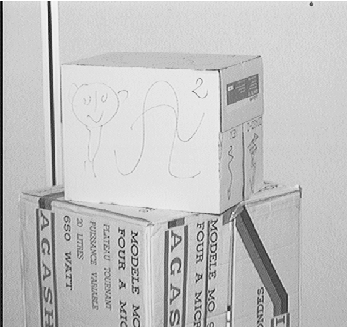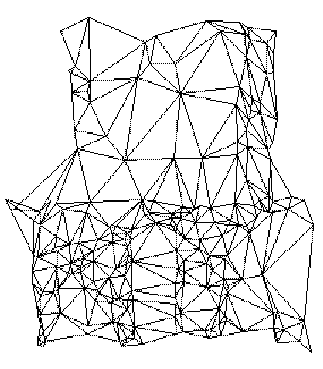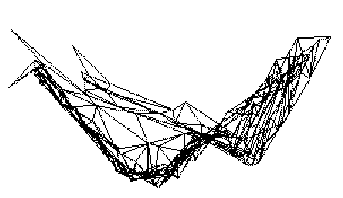Some experimentations on Argès ...
Singular Displacements
- The goal: analysis of motion without calibration, for singular displacement.
- The idea: in some particular cases, the equations allow us to determine the calibration and structure parameters.
- The implementation: a motion module determines which singular displacement is performed and recover all what is possible to recover.
Considering a rigid structure, we identify:

In the planar case, we have:

Table of residues for the experimentation with Argès:

We obtain:
- An estimation of a minimal parameterization
- A management of the usual degenerate cases
- An experimentation on a real system
For more details, see:
RR-2678 :
- Thierry Viéville, Diane Lingrand :
- Using Singular Displacements for Uncalibrated Monocular Visual Systems
A particular case: the affine case
- The goal: recover the 3D structure of a scene from an uncalibrated video sequence.
- The problem: the general model is numerically unstable and difficult to use, the affine and orthographic model is more efficiant but inaccurate.
- The idea: use an active vision strategy to eliminate the bias in the simplified model, valid in singular cases (displacements which let the retinal plane invariant).
- The implementation: on the robotic system Argès.
Using the pan angle, we will be able to perform the correct displacement.
Theoretically, the variations of the residual error with respect to the pan angle are monotone.

We then verify with the real data:

For the best displacement, we then reconstruct the scene.
The scene:

We rebuild the front an top views of the reconstruction:


We obtain:
- the theoretical validity of the approximative method,
- a criterion to measure the approximation,
- the self-calibration in this particular case,
- a medium quality reconstruction in 3D,
- a active vision strategy to determine which is the ``good'' displacement.
For more details, see:
RR-2687 :
- Diane Lingrand, Thierry Viéville :
- Dynamic Foveal 3D Sensing Using Affine Models
These works are a part of the study on Motion analysis in the uncalibrated case.








